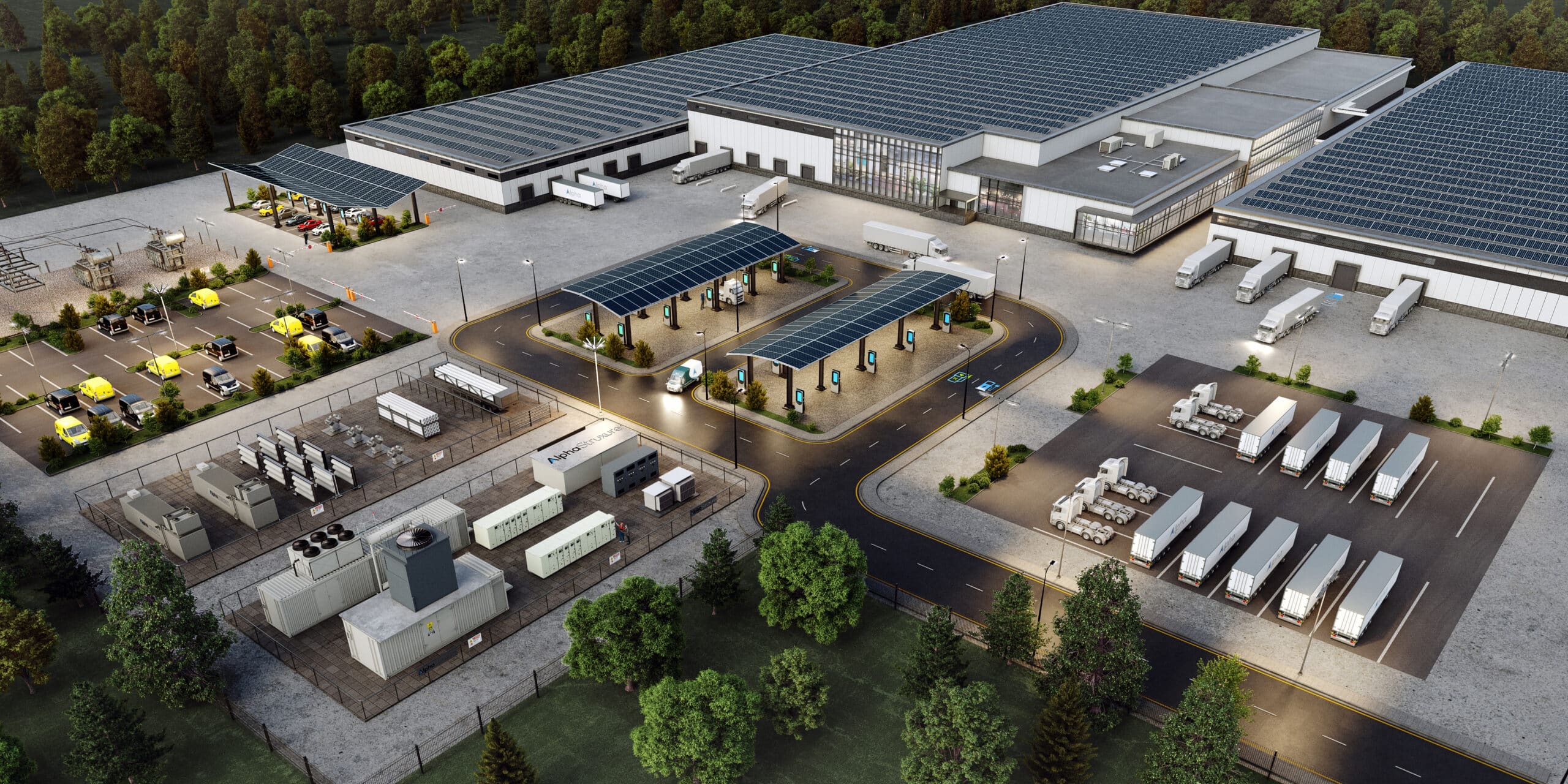How renewable microgrids and EV fleets will reshape logistics—starting with a real PoC mindset
The Business Case: Energy Is Now a Core Logistics Asset
The logistics industry runs on thin margins and tight SLAs. Microgrid logistics flips energy from a cost line to a strategic lever:
- Cost arbitrage: Generate solar onsite at warehouse midday peaks, store surplus in batteries, and charge EVs when the marginal kWh is cheapest.
- Uptime insurance: Islanding capability keeps sortation and charging online during grid outages—protecting SLAs when competitors go dark.
- Carbon as currency: Scope 1 and 2 reductions are no longer PR; they directly influence customer RFP scoring and access to green finance.
Think of the warehouse as a mini-utility and the fleet as rolling storage. In markets with high irradiance (GCC, India, Southern Europe), the math improves: more PV per square meter, faster payback, and stronger resilience against peak-tariff volatility.
The Control Stack: From Roof to Route
To make microgrid logistics work, you need an orchestrated control stack:
1) Generation & Storage Layer
- PV arrays on rooftops and carports feed a battery energy storage system (BESS).
- Bidirectional chargers (V2G/V2B) turn EV vans into temporary storage during off-peak dwell.
2) Energy Management System (EMS)
- Optimizes PV, BESS, grid import/export, and charge windows for vehicles.
- Applies tariff-aware scheduling and forecasting models (solar yield, route demand, weather).
3) Fleet & Operations Layer
- TMS/WMS integration informs when vehicles must depart and how much charge they need.
- Smart routing prefers stops with top-up potential (public fast-charge or partner depots) while protecting battery health.
4) Market Interface
- Where regulation allows, the site sells grid services (frequency response, peak shaving) or exports energy during price spikes. That revenue can offset EV TCO faster than diesel parity alone.
The magic is co-optimization: align energy flows with logistics flows. When the next outbound wave is at 3 p.m., the EMS knows which vans must hit 90% SOC and which can flex as storage.
PoC to Scale: What a Serious Pilot Should Prove
A proof of concept—think Aramex-style PoC in a high-irradiance market—should be ruthless about evidence, not theatrics. Aim to validate:
- Operational Uptime
- Islanded runbooks for the warehouse (sortation, IT, safety systems) for 2–4 hours.
- Charger redundancy and fallback charging procedures.
- Energy Economics
- Blended cost per delivered kWh to the fleet vs. grid-only baseline.
- Revenue (or avoided cost) from peak shaving and, where legal, export.
- Fleet Performance & Battery Health
- SOC-at-departure reliability > 98% for morning and afternoon waves.
- Degradation within OEM thresholds under V2G/V2B scenarios.
- Carbon Accounting
- Tied to GHG Protocol: meter PV generation, BESS throughput, grid mix factors, and gCO₂/km reduction per route.
- IT/OT Interop & Security
- EMS ↔ WMS/TMS integration, identity management for chargers, and zero-trust network segmentation.
If a pilot can show 15–30% energy cost reduction, measurable SLA resilience, and double-digit CO₂ cuts, you’re ready to sketch the rollout blueprint.
The Rollout Blueprint: Capex Light, Data Heavy
Start with load shaping, then add hardware. Too many programs buy steel before they buy intelligence.
- Phase 0 — Data & Tariffs: Map 12–24 months of energy bills, route profiles, dwell times, and weather. Build a digital twin of the site.
- Phase 1 — Smart Charging: Even with grid power only, orchestrate charge windows to avoid peak tariffs. Prove a quick win.
- Phase 2 — PV + BESS: Add rooftop/carport PV sized to midday surplus and future EV penetration; right-size BESS for 2–4 hours of site load or for peak clipping.
- Phase 3 — V2X & Market Services: Deploy bidirectional chargers, enroll in grid programs where permitted, and monetize flexibility.
- Phase 4 — Network Effects: Replicate across depots; fleet-level optimization routes vehicles to sites with the cheapest/greenest electrons today.
Financing matters: Use PPA/lease models or energy-as-a-service to de-risk capex. Tie payments to delivered outcomes (¢/kWh to fleet, uptime SLAs, CO₂e avoided). This shifts the conversation from equipment to cash flow.
Regional Advantage: Why the UAE (and GCC) Can Lead
The UAE combines high solar yield, progressive grid policy, and a logistics sector serving cross-border e-commerce. That’s perfect terrain for microgrid logistics:
- Abundant sun drives PV economics.
- New industrial zones and freeports can standardize interconnection and safety codes quickly.
- Corporate decarbonization targets and green finance pools create demand for verifiable CO₂ cuts.
Add a logistics champion willing to run a sharp PoC—the Aramex PoC mindset—and you’ve got a replicable template: Abu Dhabi → Riyadh → Cairo, then Southern Europe and India.
Risk Register: The Non-Glamorous Work
Let’s be candid about the friction:
- Policy variance: V2G rules, export tariffs, and meter aggregation differ by emirate/country.
- Procurement bloat: Over-spec’d BESS or fast chargers can kill IRR; start with software-led savings.
- Change management: Yard teams need new SOPs; drivers need charge discipline; planners need SOC-aware routing.
- Cyber-physical risk: EMS and chargers are now critical infrastructure—treat them like it.
Managing these risks is a strategy, not a footnote. The winners will be operators who can integrate energy and logistics into one control room.
Looking Ahead
Microgrid logistics reframes decarbonization as operational advantage. The next wave isn’t about pilot photos—it’s about profitably electrifying last-mile and middle-mile while turning warehouses into grid assets. If your PoC proves uptime, energy arbitrage, and CO₂ cuts, you’re not experimenting—you’re building the operating system for green logistics at scale.
Follow Tomorrowist for more insights on innovation, deep tech, and value creation.



